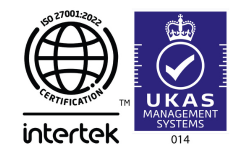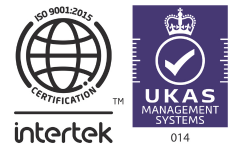Employee onboarding is more than just a new hire’s first day—it’s the foundation for their future success and satisfaction in the role. Done well, onboarding improves engagement, productivity, and retention. But what are the key elements of an effective onboarding process? 5 C’s of Employee Onboarding: a straightforward framework to help new hires hit the ground running. Let’s explore each “C” in depth and understand how it can elevate your onboarding strategy.
1. Compliance: Setting the Foundations
Compliance forms the backbone of a structured and lawful onboarding process. It ensures that new employees are familiar with their legal and procedural obligations while fostering a sense of professionalism. This step involves:
Essential Documentation: Completion of tax forms, employment contracts, and confidentiality agreements.
Policy Reviews: Introducing new hires to workplace safety protocols, codes of conduct, data protection guidelines, and IT usage policies.
While it may seem bureaucratic, compliance reduces risks for both employer and employee, ensuring everyone starts with a clear understanding of expectations. This foundation builds trust, promotes transparency, and establishes a professional tone.
2. Clarification: Defining the Role and Expectations
Clarification empowers new hires by giving them a clear understanding of their position within the organisation. The goal is to eliminate ambiguity so that employees feel confident and capable from the start. Activities include:
- Role Breakdown: Detailed explanations of job-specific tasks, priorities, and workflows.
- Performance Metrics: Discussing how success is measured and aligning expectations around goals.
- Question-and-Answer Sessions: Allowing employees to clarify uncertainties early on.
When roles and responsibilities are well-defined, employees can focus on delivering results without hesitation. Clarity prevents misunderstandings, boosts morale, and sets the stage for long-term success.
3. Culture: Instilling Values and Belonging

An organisation’s culture is its heartbeat—it influences how employees interact, make decisions, and find purpose. Incorporating culture into onboarding helps new hires feel like they’re part of something bigger. This involves:
- Core Values: Introducing the mission, vision, and values that drive the organisation.
- Real-Life Examples: Sharing success stories that showcase how employees embody these values.
- Social Integration: Encouraging participation in team traditions, events, or community initiatives.
A strong cultural foundation makes employees feel aligned with the company’s purpose, fostering loyalty and engagement. This sense of belonging often translates into greater job satisfaction and retention.
4. Connection: Building Relationships that Matter
Connection is about creating a network of relationships to support new hires throughout their journey. Employees who feel connected to colleagues and leaders are more likely to thrive. Strategies to foster connection include:
- Introductions: Arranging meet-and-greets with team members, mentors, and buddies.
- Check-ins: Scheduling regular one-on-one meetings with managers to address concerns.
- Team Activities: Hosting icebreakers or informal gatherings to encourage camaraderie.
Strong workplace relationships enhance collaboration, reduce isolation, and contribute to a supportive, inclusive environment. When employees feel valued by their peers, they’re more motivated to contribute to team success.
5. Check-in: Ensuring Continuous Support and Growth

Onboarding doesn’t end after the first week or month—it’s an ongoing process. Regular check-ins help solidify the experience and provide opportunities for growth. These should include:
- Milestone Reviews: Evaluating progress at 30, 60, and 90 days to ensure employees feel confident in their roles.
- Feedback Sessions: Allowing new hires to share their onboarding experiences and suggest improvements.
- Goal Reassessment: Updating objectives based on the employee’s progress and feedback.
Continuous support demonstrates an organisation’s commitment to its employees’ success. Regular follow-ups can resolve issues early and show that employee well-being is a top priority.
How PayEscape Can Help
An effective onboarding process requires structure, consistency, and a personal touch—all of which can be streamlined with the right tools. PayEscape’s HR and Payroll solutions offer:
- Integrated Onboarding Systems: Simplify compliance with automated paperwork and digital contract management.
- Clear Communication Tools: Provide role-specific guides, performance metrics, and real-time Q&A platforms for clarification.
- Culture-Building Features: Centralise access to organisational values, team introductions, and event coordination.
- Connection Enhancements: Enable seamless communication and scheduled check-ins with intuitive HR software.
- Ongoing Support Tracking: Automate milestone reminders and feedback collection to ensure continuous improvement.
By adopting PayEscape’s HR and Payroll solutions, you can transform your onboarding process into an efficient, engaging, and comprehensive experience. Let’s help every new hire start strong and empower them to succeed.















